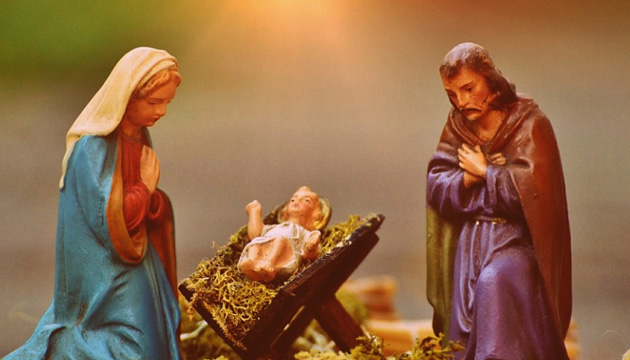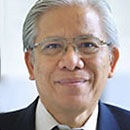Filipinos so love Christmas that it has now become customary throughout the land to start celebrating it in September when the rainy season has ended and there’s a bit of chill in the air.
Stores in shopping malls are the earliest to begin by competing with each other for the most creative Christmas display as joyful strains of carols greet shoppers and remind them of Christmas presents to buy or receive. However, the official Christmas observance by the Catholic church in the Philippines is from the beginning of the Simbang Gabi on December 16. Approximately, 90 percent of Filipinos are Christians and 80 percent of them Catholic. Thus the celebration continues to January 6 when Epiphany or the Feast of the Three Kings brings it to a close.
Parol or Christmas Lanterns
Parols are multicoloured lanterns that adorn windows of homes and buildings throughout the holiday season. In some places, these lanterns are hung outside people’s homes, no matter how humble, and lighted at night as signs that Joseph and Mary are welcome in their homes and need not look for an inn to stay nor give birth to Jesus in a stable. The parol is the symbol of the Star that the Three Kings followed to Bethlehem on the night Christ was born.
Originally, parols were simply made of a five-point-star-shape bamboo frame covered with colorful rice paper, tissue or cellophane. Over the years they have evolved into various elaborate shapes of different materials and sizes. The province of Pampanga, north of Manila, is credited for originating a parol made of capiz (translucent seashells, the size of saucers) with dancing lights inside the structured frame. This is usually bigger and more expensive than the common bamboo and paper variety and is regarded as a status symbol. Only rich families adorn their windows with it. Since Filipino amateur entrepreneurs are good at mass producing trendy products, soon cheaper versions of this capiz lantern are being sold on sidewalks and more people are buying it. Parol vendors usually set up temporary stands in vacant lots around the city and under concrete traffic overpasses to sell their colorful wares.
Simbang Gabi
Starting on December 16, parol lights are also turned on early in the morning to brighten the way for people going to church in the dark for the 4 a.m. Simbang Gabi or Misa de Gallo (literally, “Mass of the Roosters”, since it starts with church bells ringing at pre-dawn to awaken churchgoers to get dressed and roosters to crow). It is a nine-day novena of Masses in anticipation of the birth of Christ. It is a way of thanksgiving, worship, petition or simply fulfilling someone’s vow for a wish come true.
The Simbang Gabi tradition is popular among the young because it gives them a chance in the cool of dawn to wear their seldom-worn jackets and sweaters and for courting couples, an opportunity to hold hands and cuddle up to keep warm in church without the glaring eyes of the older folks. The Mass itself is joyous with carol singing throughout accompanied by local musical instruments designed to keep everyone awake. After Mass, churchgoers reward themselves with bibingka (rice cakes), puto bumbong (a Christmas specialty of purple sticky rice steamed in bamboo tubes) and cups of steaming salabat (ginger tea) sold by seasonal vendors around the church yard made merry with their improvised kiosks lighted with lanterns, twinkling Christmas lights and glitter buntings.
Midnight Mass and Panunuluyan
Simbang Gabi culminates on Christmas Eve with the Midnight Mass. In some churches, the Midnight Mass starts with the enactment of the journey of Joseph and the pregnant Virgin Mary in search of lodging. The pageant, traditionally called the "Panunulúyan", "Pananawágan", or "Pananapátan", is common in small towns where it is performed outside the church, with the actors portraying Joseph and Mary going to pre-designated houses. They sing a chant meant to rouse the "owners of the house" (also actors) to request for lodging. The owners then rudely turn them away, sometimes also in song, saying that their house is already filled with other guests. Finally, just before midnight, Joseph and Mary make their way to the parish church where a replica of the stable has been set up. The birth of Jesus is celebrated with the Midnight Mass on Christmas eve.
This Midnight Mass is always well attended by young and old alike. Even non-churchgoers are often present at this Mass. Usually whole families would occupy a long pew just by themselves with all members attired in their holiday best. It is customary for children to have new clothes and shoes for Christmas while parents wear their “special occasion” clothes and ladies show off their jewelry. The sung Mass is about an hour long but nobody sleeps even during the homily because almost everyone is thinking about the Noche Buena feast and the opening of Christmas presents when they get home. After the final blessing, the priest takes a life-size replica of a baby in swaddling clothes from a makeshift manger and holds it up at the foot of the altar while people line up to kiss the Baby Jesus happy birthday. Then there is a mad rush to get home to food, drink and gifts.
The Noche Buena Repast on Christmas Eve
Noche Buena is when family members dine together after Midnight Mass on traditional yuletide fare, which includes some of the following depending on household finances: queso de bola (Spanish for "ball of cheese"), which is edam or extra old cheddar sealed in red paraffin wax, tsokoláte (thick hot cocoa), hot pan de sal, noodles, menudo, fatty slices of ham from Chinese shops on Echague in Quiapo, bangus or chicken relleno and leche flan, halayang ube and fruit salad with buko, for dessert. The centerpiece of the Noche Buena dining table is the Christmas Belen. Some presents are opened after feasting since everyone would be too full to sleep.
Christmas Day Rituals
Christmas Day is primarily a family affair. The Mass on December 25 is for those who did not attend the Midnight Mass which is good for Christmas Day itself. The Christmas Day Mass usually starts later than usual for the benefit of those who stay up late on Christmas Eve. Most families, however are up early on Christmas day even after staying up late on Christmas Eve, in preparation for the visits of relatives, friends and throngs of inaanak (godchildren though baptismal and confirmation rites of the Catholic church).
Typically on Christmas morning, Filipinos visit their extended family to pay their respects to senior relatives. This custom of giving respect is enacted through the "Págmamáno" ritual. A younger person takes the back of an elder's hand and presses it against the forehead, while saying the greeting, Máno, pô (literally, "[Thy] hand, please"). The elder often responds by saying a blessing or simply acknowledging the gesture, and then gives "Aguinaldo" usually money in crisp freshly minted paper bills, withdrawn from banks specifically for this purpose. Godparents in particular are socially obligated to give presents or aguinaldo to their godchildren, who often receive larger amounts of money than mere relatives and visitors.
A festive lunch may follow around noon. Again the menu is dependent upon family finances , with richer families preparing grand feasts of pochero and lechon, while poorer families cook simple yet special dishes like pork adobo or tinolang manok.
When night time falls, relatives and visitors return home or linger to drink, play parlour games, and chat. Some may stay for another feast at dinner, while the older folks spend the entire day quietly resting after the previous days' festivities.
The Commercialization of Christmas in the Philippines
After World War II, the American influence on Philippine Christmas celebration has prevailed. Western Christmas songs like “I’m dreaming of a white Christmas” fill the shopping malls from opening to closing time everyday as weary shoppers rush from store to store with their parcels. There are other Western-influenced trappings that have become popular with the Filipino upper and middle classes. The most ubiquitous are a bearded Santa in a fur-trimmed red suit and a sleigh of toys pulled by reindeer. They seem out of place in a tropical country like the Philippines but, alas, they, and “Black Friday” bargain gifts seem to have replaced the Infant Jesus in many a home.
Fake Snow on plastic Christmas trees
Another alien Christmas symbol in the Philippines is the artificial Christmas tree, complete with fake snow and plastic trimmings. Practically every store and house in Manila has an over decorated one during the holidays. In September stores do a brisk business selling artificial Christmas trees, lights and decorations. Sidewalk vendors even sell tree branches painted white or chicken wire shaped like Christmas trees with each hole stuffed with balls of white cotton.
Caroling for pennies
What is unique in the Philippines during the Christmas season is seeing poor children caroling from door to door without any musical instrument, training or correct words to go with the songs. They do this for whatever the homeowner decides to give them. They are grateful no matter how small the amount. Yet often they are just ignored and they leave empty handed. A sad sight in poor communities where money is scarce even at Christmas.
What to do in Canada
Hopefully, older Filipinos abroad, who may still have a longing for a remembered traditional Filipino Christmas, will revive some of these Filipino customs for the younger generations to follow in a way that will popularize these traditions again which make us truly Filipinos.



